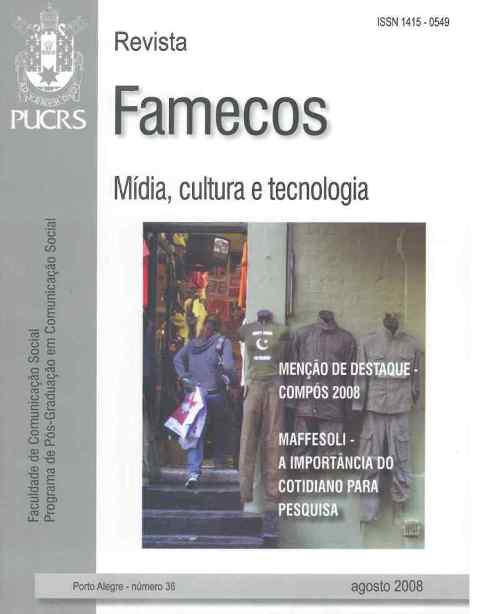Performance of the television news's presenters: the ethos construction
DOI:
https://doi.org/10.15448/1980-3729.2008.36.4417Keywords:
Television news, apresenter, ethosAbstract
From “newscaster “, who was limited to reading information with a distanced demeanor and radiophonic style, to “anchor”, who emphatically takes positions on the facts reported, we see considerable transformations in the profile of television news presenters. Especially beginning in the 1990s, it is possible to identify a general tendency toward the personalization of the presenters, consequently leading to a change in the very rhetoric of television news. This new rhetoric strategy now depends upon the emphasis given to the construction of the ethos of its presenters (an image constructed by the discourse itself). The present study addresses defining characteristics of four types of ethos among Brazilian news presenters, indicating how their configuration is preliminarily determined by the discourse strategies adopted by television news programs.Downloads
References
CRUZ JUNIOR, Dilson Ferreira. O Éthos do enunciador nos romances de Machado de Assis: uma abordagem semiótica. 2006. Tese (Doutorado em Semiótica e Linguistica Geral) - Programa de Pós-graduação em Semiótica e Lingüística Geral, USP, São Paulo, 2006.
FECHINE, Yvana. Televisão e presença: uma abordagem semiótica da transmissão direta em gêneros informativos. 2001. Tese (Doutorado em Comunicação e Semiótica) - Programa de Estudos Pós-graduados em Comunicação e Semiótica, PUCSP, São Paulo, 2001.
______. Estratégias de personalização dos apresentadores do SPTV: uma abordagem semiótica do problema. In: FAUSTO NETO, Antonio et. al. (orgs.). Práticas midiáticas e espaço público. Porto Alegre: EDIPUCRS/Famecos, 2001.
FIORIN, José Luiz. O Éthos do enunciador, in A. Cortina A. R. Marchezan (org.), Razões e sensibilidades: a semiótica em foco. Araraquara (SP): Laboratório Editorial FLC/UNESP/Cultura Acadêmica Editora, 2004.
______. Semiótica e Comunicação. Galáxia – Revista Transdisciplinar de Comunicação, semiótica, cultura. São Paulo: EDUC, s/d.
______. A lógica da neutralidade: um caso de aspectualização do ator. XVIII Seminários do Grupo de Estudos Linguísticos de São Paulo. Anais... São Paulo: Dedalus/Acervo USP-FFLCH-LE, 1989.
GREIMAS, Algirdas Julien & COURTÉS, Joseph. Dicionário de semiótica (trad. port. Alceu Amoroso Lima et al.), Tomo I. São Paulo: Cultrix, 1983.
HAGEN, Sean e MACHADO, Márcia B. Jornalismo e o mito da perfeição andrógina. UNIrevista, Unisinos, Porto Alegre, v. 1, n. 3, 2006.
LANDOWSKI, Eric. Diana, in vivo, in O. Quezada Macchiavello (ed.), Froteras de la semiótica. Homenaje a Desiderio Blanco. Universidad de Lima/ Fondo de Cultura Económica: Peru, Lima, 1999.
MACHADO, Arlindo. A televisão levada a sério. São Paulo: SENAC, 2000.
SQUIRRA, Sebastião. Boris Casoy: o âncora no telejornalismo brasileiro. Petrópolis: Vozes, 1993.
VÉRON, Eliseo. Construir el acontecimento. Barcelona: Gedisa Editorial, 1995.
Downloads
Published
How to Cite
Issue
Section
License
Copyright
The submission of originals to Revista Famecos implies the transfer by the authors of the right for publication. Authors retain copyright and grant the journal right of first publication. If the authors wish to include the same data into another publication, they must cite Revista Famecos as the site of original publication.
Creative Commons License
Except where otherwise specified, material published in this journal is licensed under a Creative Commons Attribution 4.0 International license, which allows unrestricted use, distribution and reproduction in any medium, provided the original publication is correctly cited.






